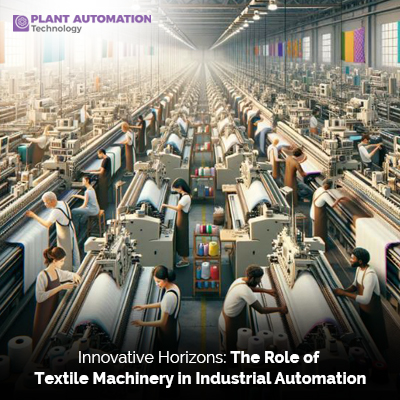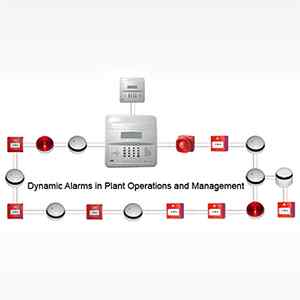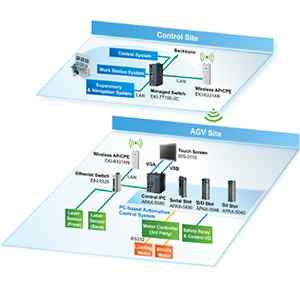Innovative Horizons: The Role of Textile Machinery in Industrial Automation

Introduction:
The advent of industrial automation has revolutionized manufacturing processes across various industries. In the textile sector, machinery plays a pivotal role in driving efficiency, productivity, and quality control. This article explores the evolution of textile machinery, the benefits of industrial automation in textile manufacturing, the specific role of textile machinery in automation, challenges and opportunities in textile automation, case studies and examples, as well as future trends and predictions.
Evolution of Textile Machinery
The history of textile machinery dates back to the 18th century with the invention of the spinning jenny and the power loom. These early machines mechanized various aspects of textile production and paved the way for the Industrial Revolution. Over the years, significant advancements have transformed textile machinery beyond recognition. The introduction of automated looms, knitting machines, and dyeing systems revolutionized textile manufacturing, enabling higher production rates and superior product quality. The incorporation of digital technologies and robotics further streamlined the production process, eliminating manual labor and enhancing precision.
Benefits of Industrial Automation in Textile Manufacturing
Industrial automation has brought numerous advantages to the textile industry. Firstly, automation has significantly increased productivity by automating repetitive tasks, reducing production time, and minimizing errors. Advanced machinery can handle complex patterns and designs with speed and accuracy, resulting in higher output levels. Additionally, automation offers enhanced quality control, ensuring consistent product standards and reducing defects. Automation systems can monitor key parameters such as tension, stitching, and color consistency, resulting in improved product quality and customer satisfaction.
Furthermore, the cost-effectiveness of automation cannot be overlooked. While initial investments in machinery and system integration can be substantial, automation ultimately leads to long-term cost savings. Automation reduces the need for human labor, optimizing workforce allocation and minimizing labor costs. Moreover, automation minimizes material waste through precise measurement and cutting processes, reducing overall production expenses. From a sustainability perspective, automation promotes environmental responsibility by reducing energy consumption and minimizing waste generated during manufacturing processes.
Role of Textile Machinery in Industrial Automation
Textile machinery plays a crucial role in achieving industrial automation in the textile manufacturing sector. Various machines are employed for different functions throughout the production process. For instance, spinning machines are used to convert raw materials like cotton or polyester into yarn. These machines automate the drafting, twisting, and winding processes, significantly increasing efficiency and consistency.
Weaving and knitting machines automate the process of converting yarn into fabrics. These machines incorporate advanced technologies to handle complex patterns with ease, resulting in precise and uniform fabric production. In the dyeing and finishing stage, automated dyeing machines utilize computer-controlled systems to ensure color accuracy, fast color penetration, and reduced water and chemical usage.
Automation extends to other stages in the production process, such as cutting and garment assembly. Computer-controlled cutting machines execute precise cuts based on digital patterns, minimizing material waste. Robotic arms can be programmed to perform tasks such as garment stitching, reducing human labor requirements and allowing for faster production.
Challenges and Opportunities in Textile Automation
While the benefits of textile automation are significant, its integration into the manufacturing process presents certain challenges. One such challenge is the initial investment required for implementing automation systems. High capital costs may be a barrier for small and medium-sized textile enterprises. Additionally, the complexity of automated machinery requires skilled technicians and operators, demanding additional training costs.
However, these challenges are offset by the opportunities that automation presents. Increased efficiency and productivity can lead to cost savings, improved competitiveness, and expanded market reach. The growing demand for sustainable manufacturing practices provides an opportunity for textile companies to adopt automation solutions that reduce waste, energy consumption, and environmental impact.
Case Studies and Examples
Numerous textile companies have successfully implemented automation systems to optimize their manufacturing processes. For example, Nike uses automated cutting and sewing machines to increase production efficiency and reduce lead times. Unifi, a leading textile manufacturer, employs automated yarn spinning and texturing machines to deliver consistent and high-quality products. These case studies highlight the positive impact of automation on production efficiency, cost savings, and product quality.
Future Trends and Predictions
The future of textile machinery in industrial automation holds immense potential. Advancements in artificial intelligence, robotics, and data analytics will further enhance automation capabilities in the textile industry. Smart machinery equipped with sensors and IoT connectivity will enable real-time monitoring and optimization, contributing to increased productivity and reduced downtime.
Additionally, the integration of automation with sustainability initiatives will drive eco-friendly manufacturing practices. The future of textile machinery lies in intelligent automation systems that can adapt, learn, and self-optimize, leading to even greater levels of efficiency, quality, and sustainability.
Conclusion:
Textile machinery has played a vital role in transforming the textile industry through industrial automation. From spinning and weaving to dyeing and finishing, automated machines have significantly increased efficiency, productivity, and quality control. As technology continues to advance, the textile sector can look forward to even greater innovations that will propel the industry into an era of smarter and more sustainable manufacturing.







